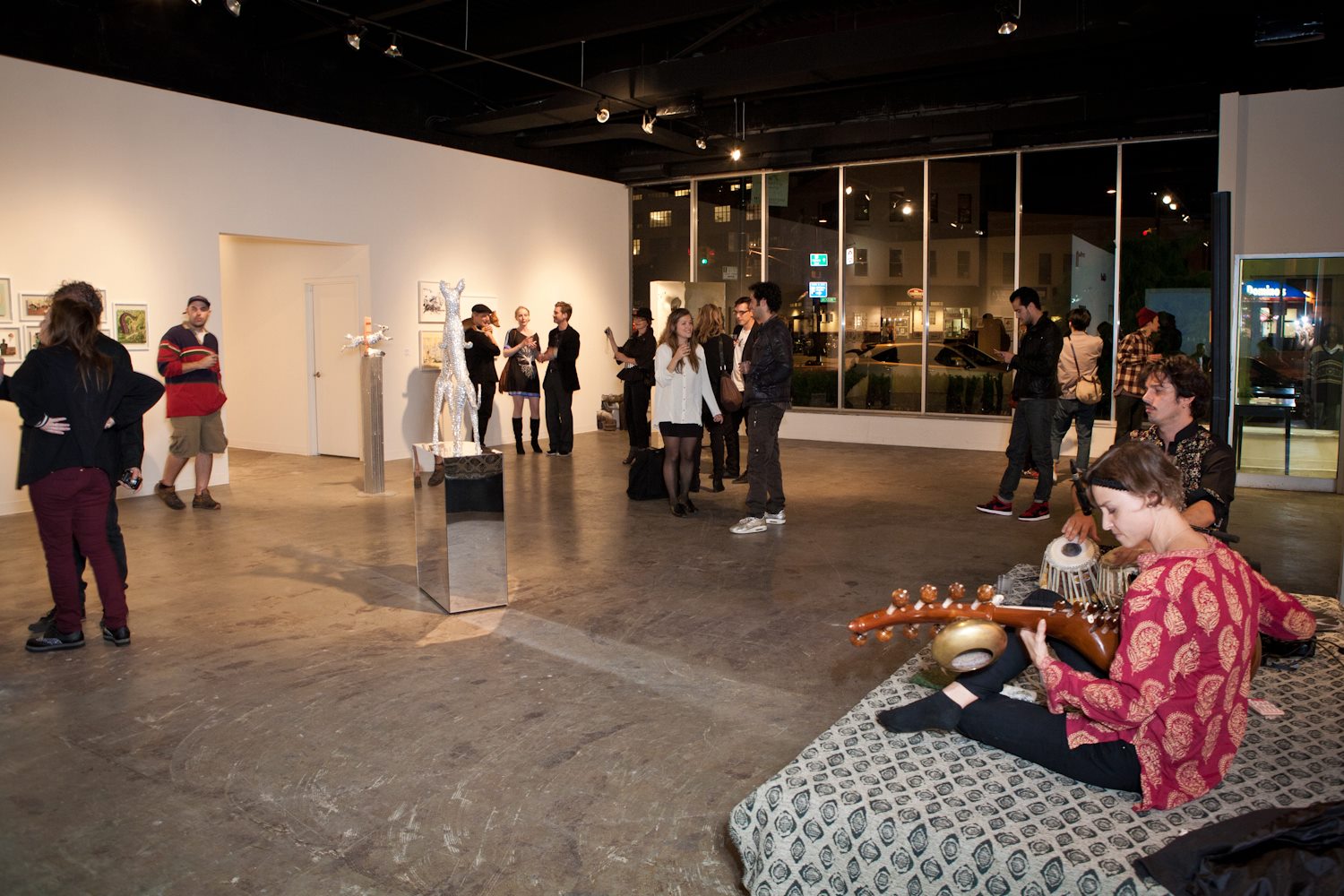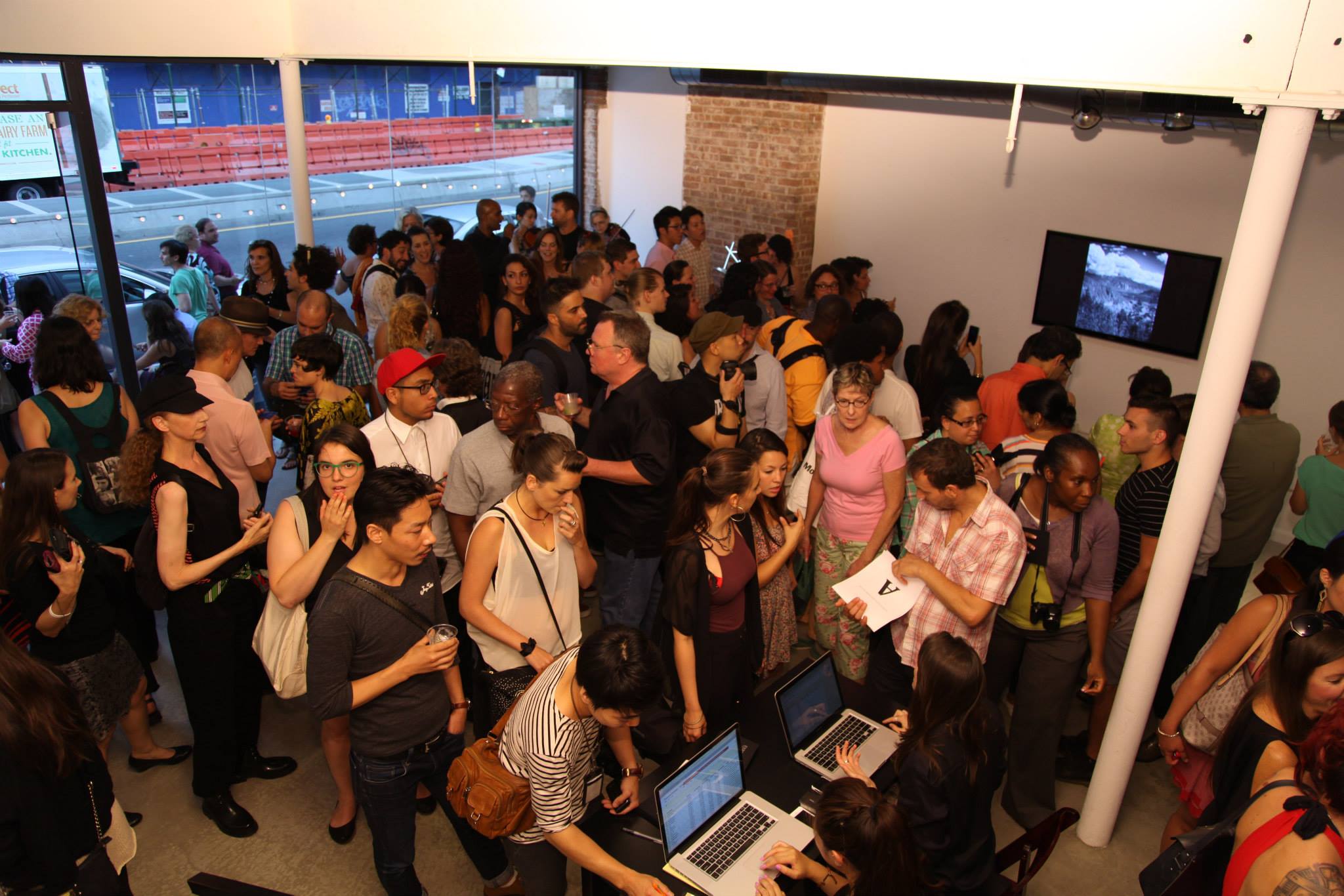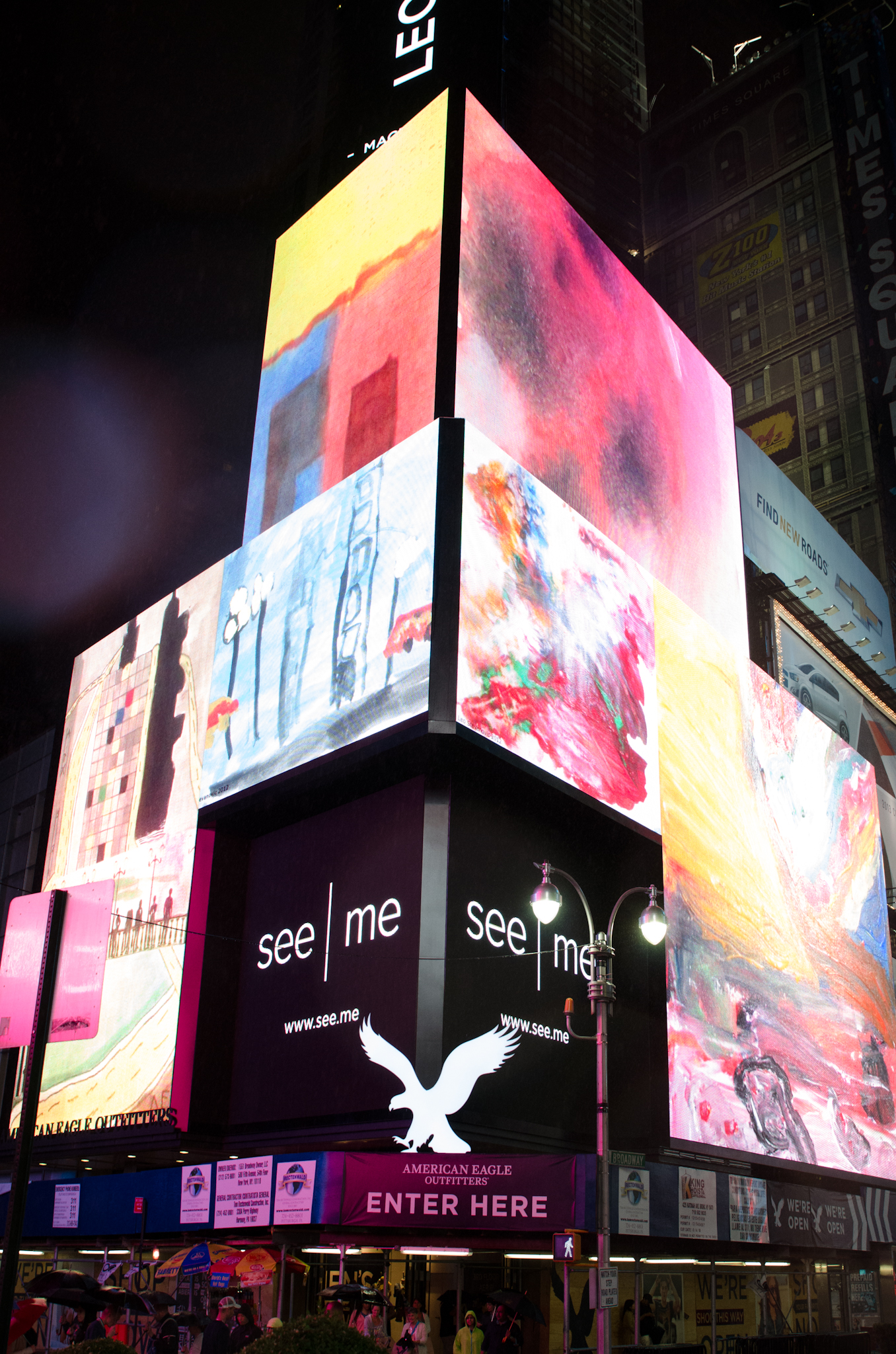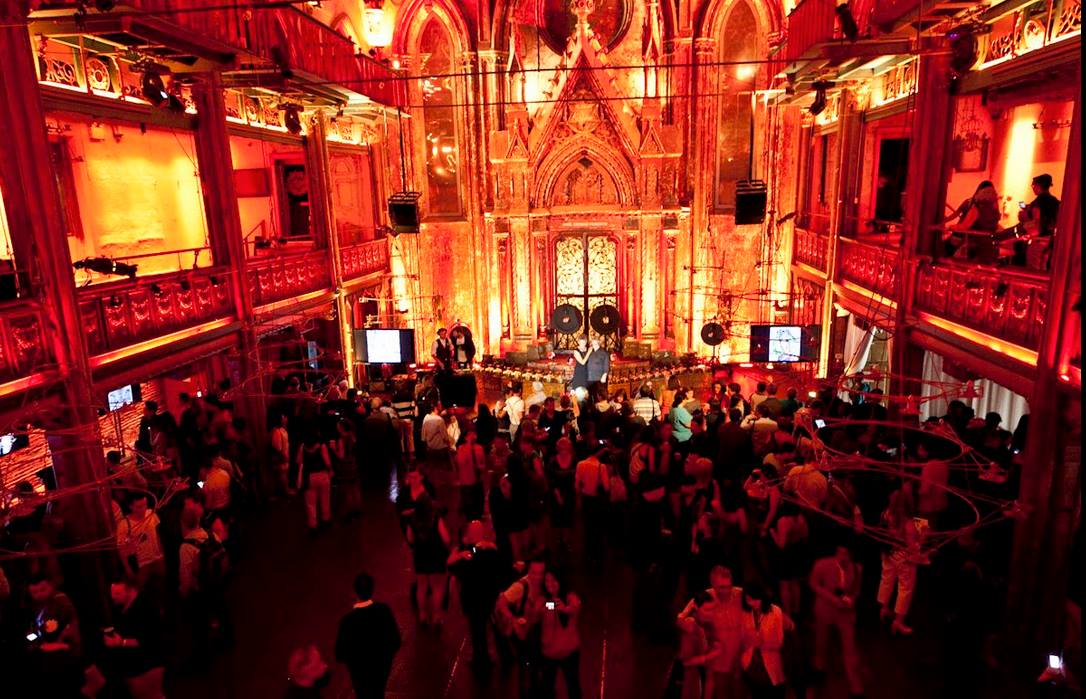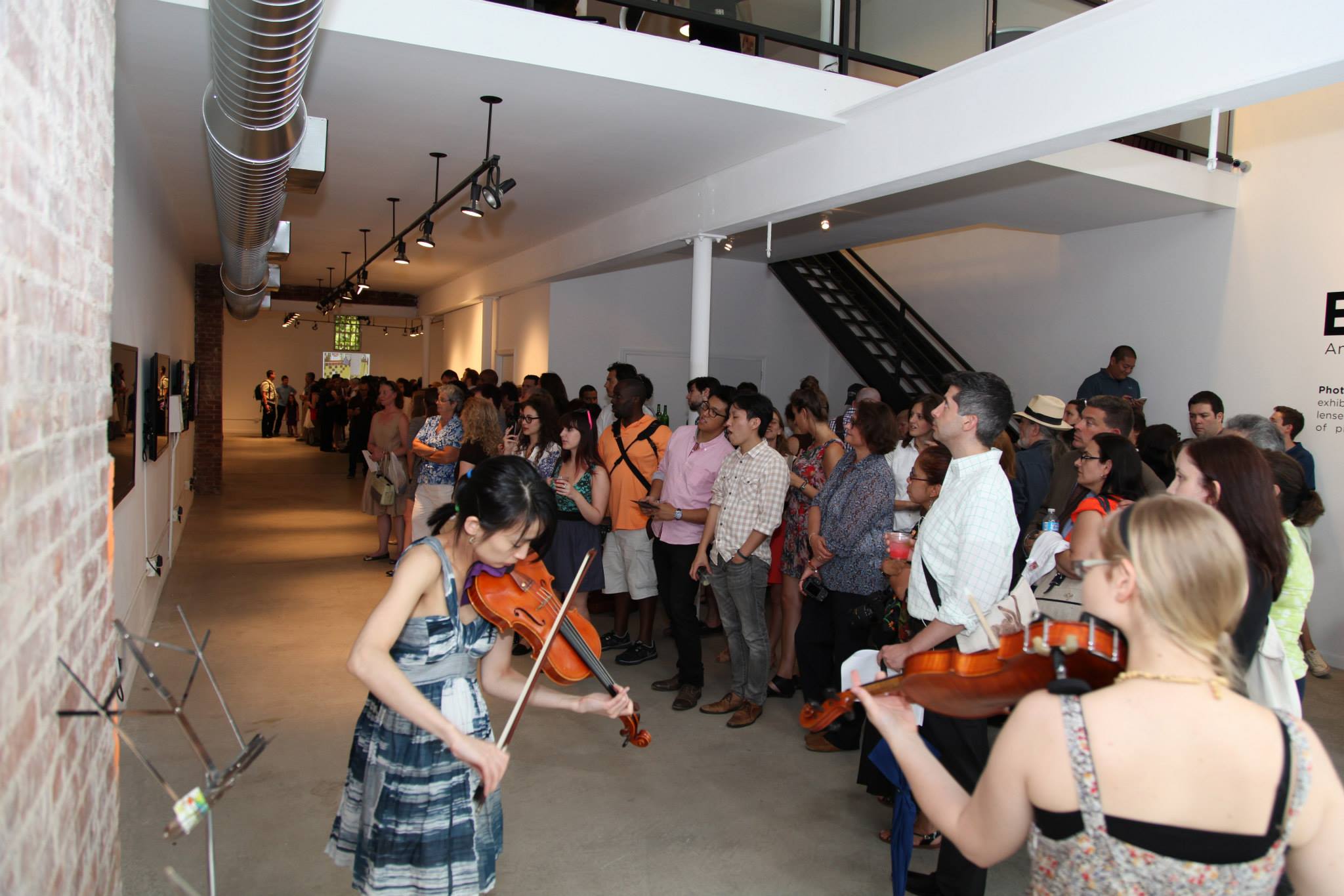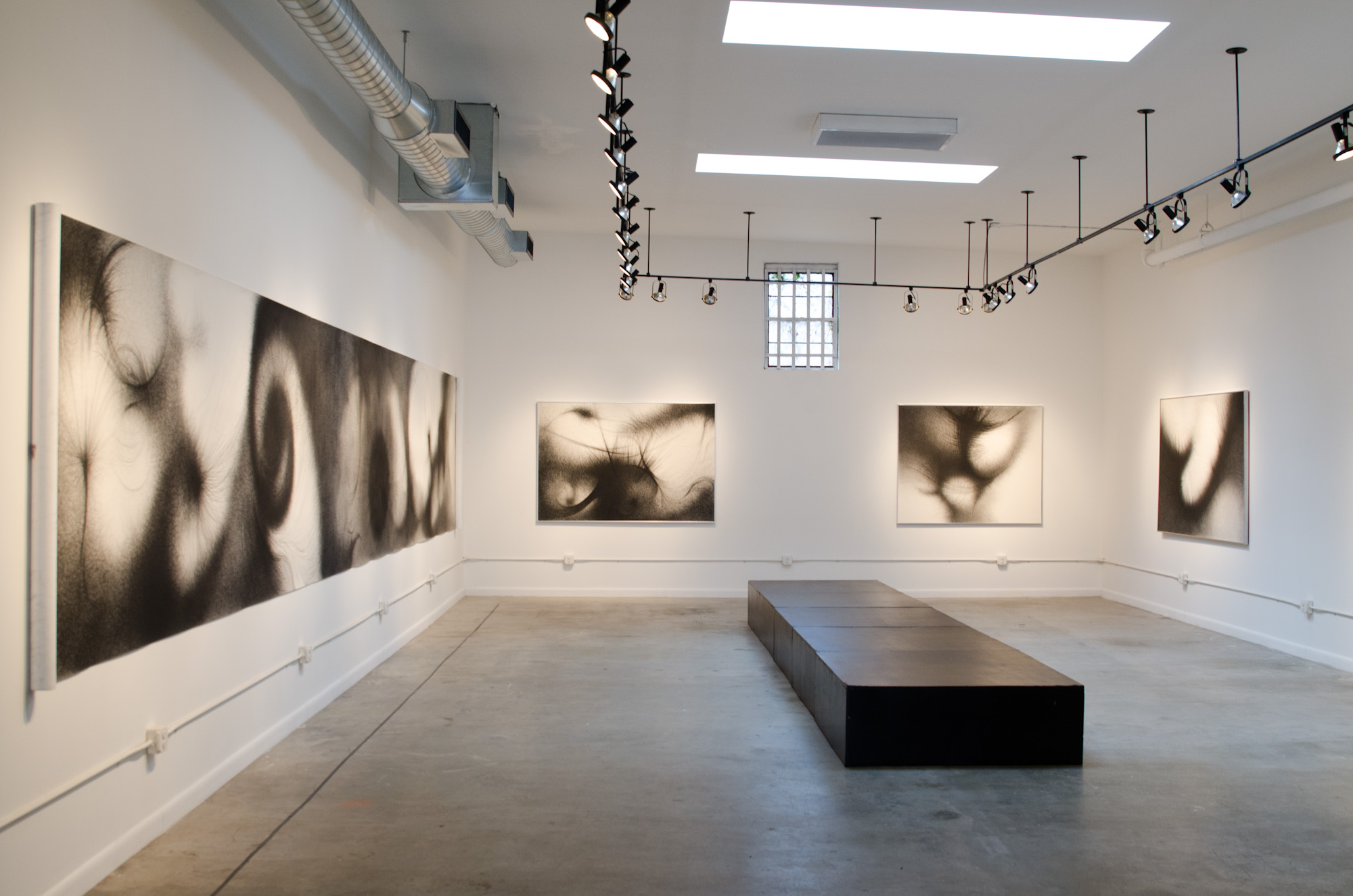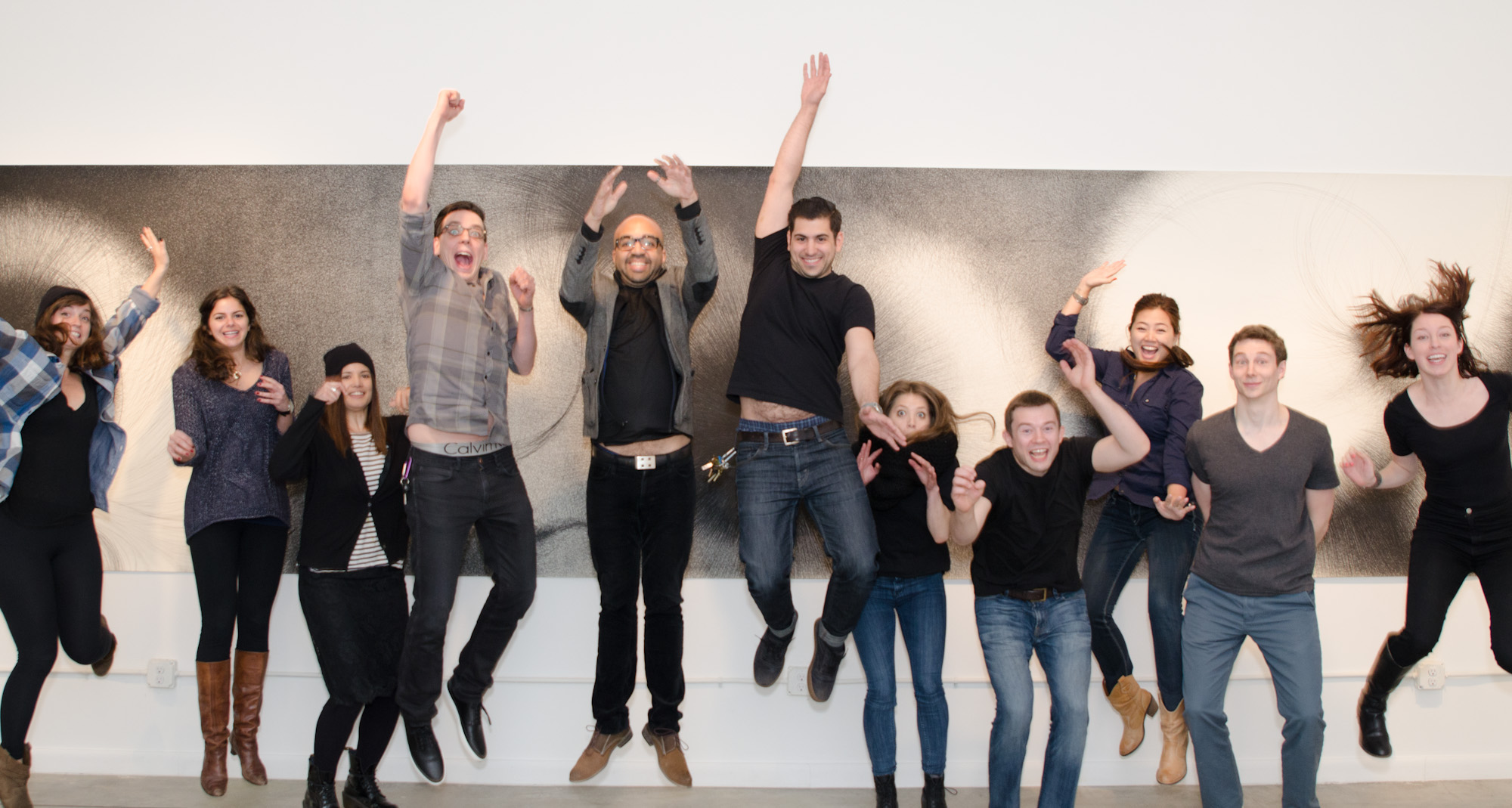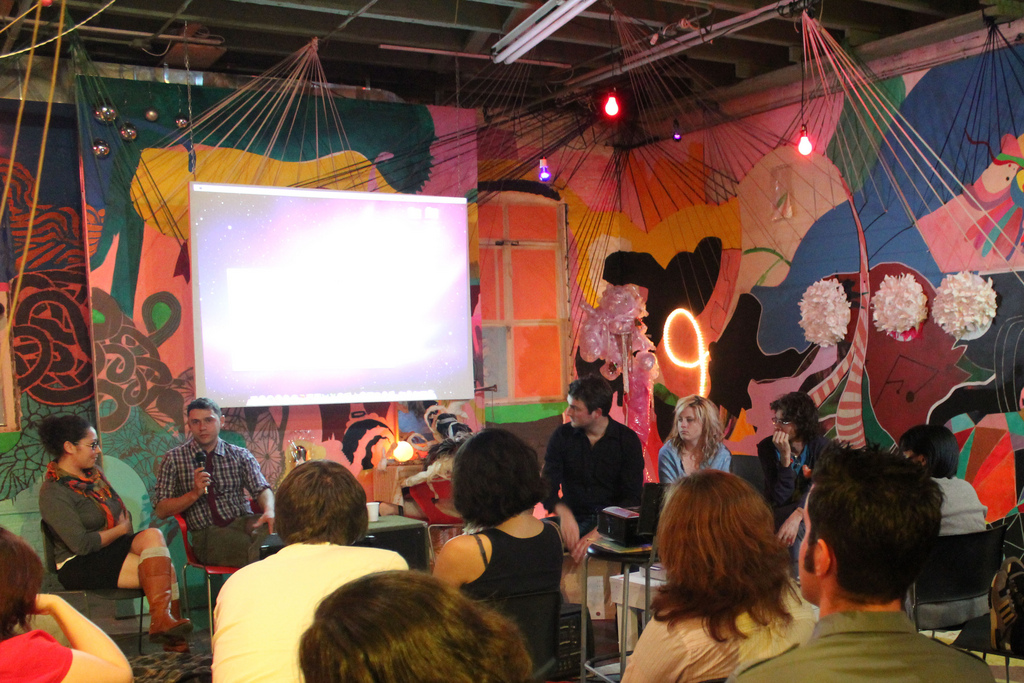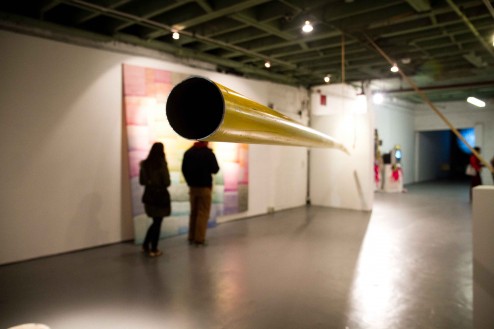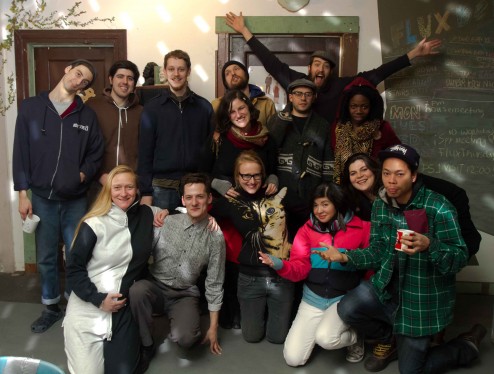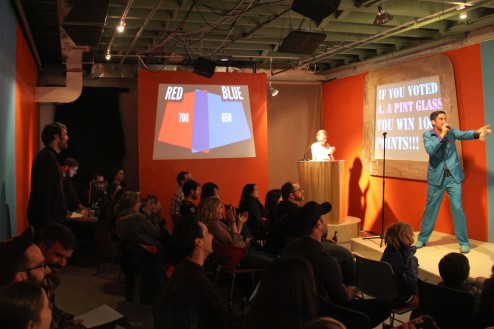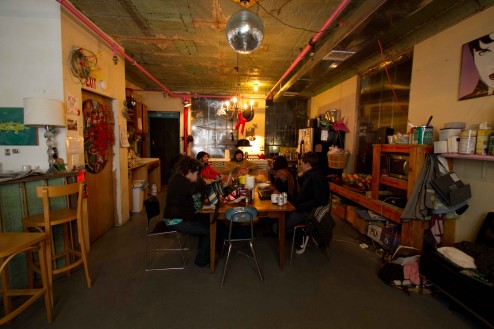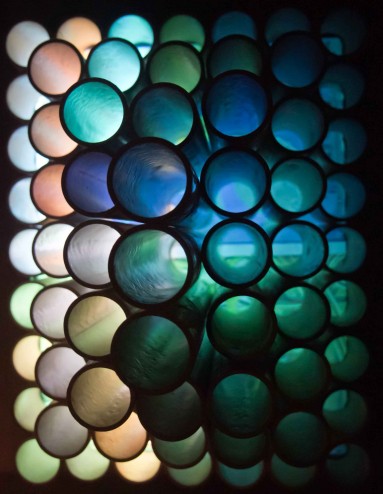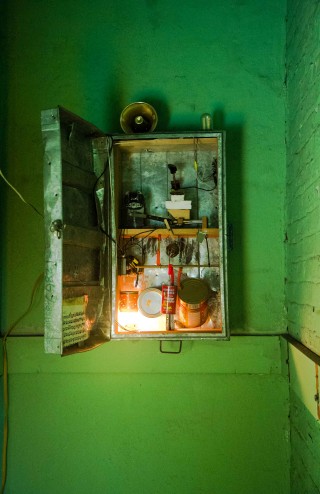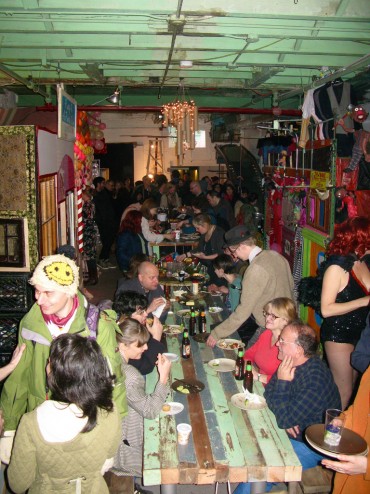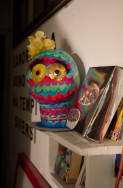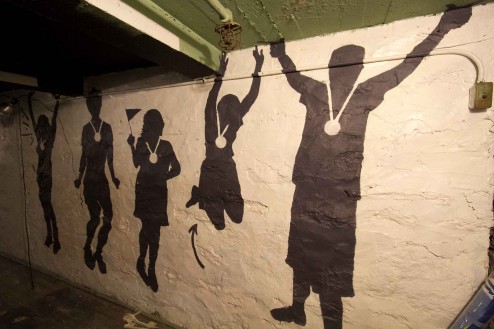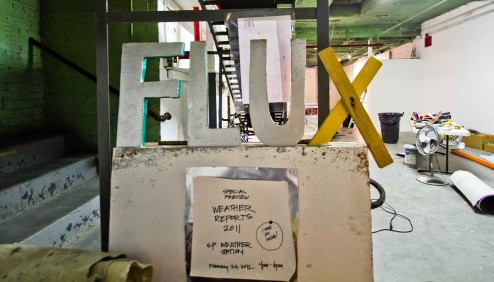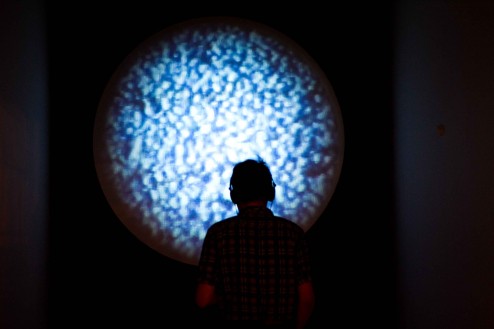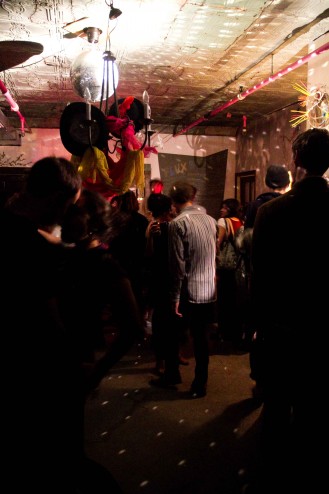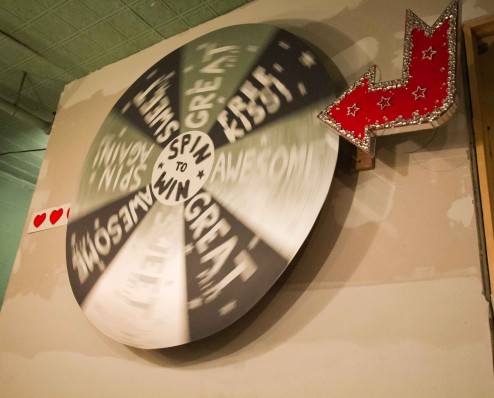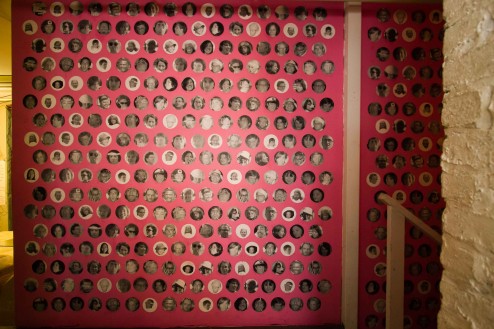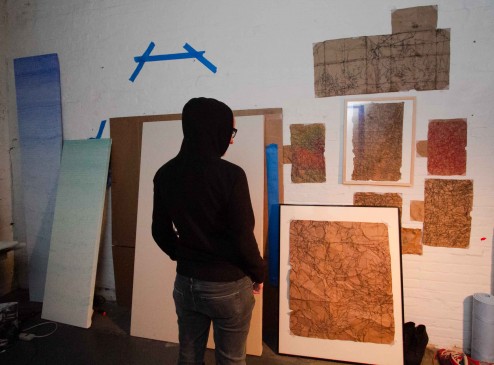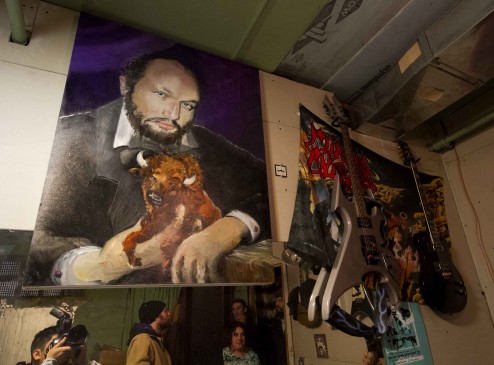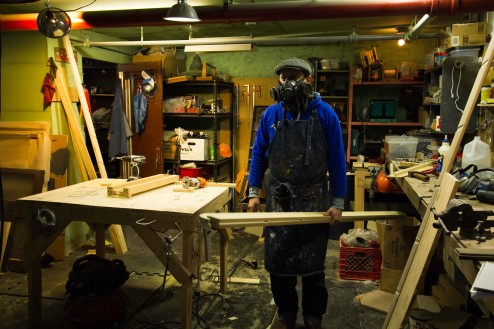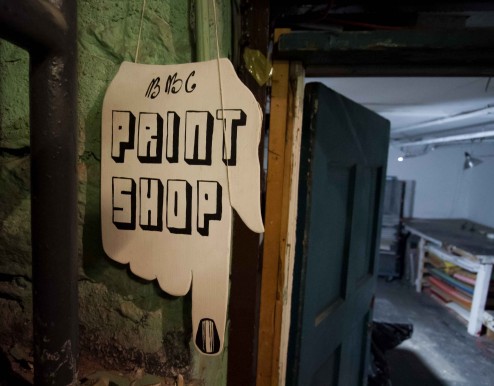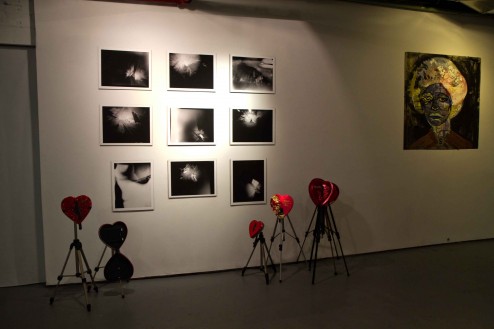see.me
space type: art gallery | neighborhood: long island city | active since: 2013 | links: website, facebook, twitter
You’ve probably heard of See.Me already. The organization used to be called Artists Wanted, and they were well known for their Art Takes Times Square projects, where artists could compete for the chance to see their creations writ huge on a Times Square billboard. Or you may have heard of the group’s founders: William Etundi, who used to throw the massive Danger parties, and Jason Goodman, one of the founders of 3rd Ward.
See.Me is an amalgamation of the awesome skills and ideas from all of those projects. It’s an interactive online platform where artists create profiles to showcase their art (unlike those on Facebook, Instagram, et al., See.Me keeps none of the rights to these images) and seek donations of any amount to fund their endeavors. See.Me also has a terrific new gallery spaces in Long Island City, where they show works by the site’s “power users” in perpetual rotation, and the group continues to hold awesome contests and throw sprawling art parties, gatherings, and shows. Here’s their own intro video:
Their latest contest is called Creatives Rising, which will culminate in a massive exhibit in and around the See.Me gallery in October. Work from winning artists will be projected on the face of a 30-story condo behind the gallery (possibly with help from the Illuminator!), and hundreds of contest participants will see their work on display during the event. It’s not too late to join the fun—go here to create your own See.Me profile and get started.
But first read my Q&A with See.Me’s Outreach Coordinator, Annie Laurie!
brooklyn spaces: Art Takes Times Square must
have been an incredible project to be a part of.
Annie: Yeah, it was. It was really fun and
we got an amazing response from the community. That was when we were still
Artists Wanted, and we were basically only doing competitions, but they were
really ambitious competitions that no one else was doing. People had been trying
to get art in Times Square for a long time, but we were the first ones to do it.
brooklyn spaces: What’s the secret? How come
you guys got to do it when no one else could?
Annie: It was all Will; he’s got insane
connections. His ability to disrupt things is incredible. He’s kind of into
disruptive parties, that’s his thing. To pull something off like that was a real
feat, but he had a bigger vision, and that’s what See.Me grew out of.
brooklyn spaces: So can you summarize
See.Me’s mission?
Annie: Will wanted to take this huge
community of artists we’d been building and transfer it into a new kind of
social network. See.Me allows you to build your own profile that looks like a
website. It’s beautiful, with a great layout; it really makes your work look
better. And on top of that there’s an amazing community that’s supporting you.
You can get support through Twitter or Facebook, or people can donate money—even
just a dollar—if they like your work. You can use your page to sell artwork,
concert tickets, whatever you want. And on top of the social network, we still
do competitions to find new talent and emerging artists, and we host crazy fun
events all the time. So See.Me combines a social network with real-life events.
brooklyn spaces: How many artists have See
Me profiles now?
Annie: We just reached 800,000! We grew
really fast, which is so exciting.
brooklyn spaces: And it speaks to the fact
that See Me found a need and was able to fill it in a really effective
way.
Annie: Totally. I think people are sick of
Facebook; they don’t want to have their art on there. We’re trying to fill the
needs of artists—artists want a community, they want feedback, they want
financial and social support, and they want to share their work with the world.
brooklyn spaces: Are the users primarily
visual artists? Photographers, sculptors, that kind of thing?
Annie: You can be any type of creator. I
love seeing the new communities pop up. For example, we just integrated Soundcloud into the site,
and now I’m seeing tons of amazing musicians using their portfolio page to post
music, videos, album artwork, and raising money to support their visions. Our
fastest-growing areas are music and fashion, but the majority of users are still
visual artists and photographers.
brooklyn spaces: Tell me about the gallery
space. Has it always been a gallery? Has it always been the home of
See.Me?
Annie: We just moved here in January, and
we love it. It’s a lovely gallery, and it allows us to showcase our artists’
work at all times. We don’t take any commission; if anyone sells a piece in
here, it’s all theirs. We’re not exactly against the gallery system, but we kind
of are. We want to give artists a chance to get their names out there without
gallery representation.
brooklyn spaces: Tell me a bit about the
different events you’ve done.
Annie: We just had a big exposure show for
photographers. Before that we did a solo exhibition for Jun Kim, and Cinders Projects
produced a printmaking show in the gallery. We’re very open if somebody wants to
use our space for a show; we’ll help them out in any way we can. Our biggest
event is coming up in October: the Creatives Rising exhibit. We’re going to take
over this space, the adjacent warehouse, and Rockrose Park too, and we’ll be
projecting the winners’ art onto the Linc LIC building right behind us.
brooklyn spaces: What’s the goal of
Creatives Rising?
Annie: It’s to get people using See.Me in a
more meaningful way, seeing what See.Me can do for them. The campaign is about
helping artists becoming their own representation, giving them the tools and the
power to succeed without a gallery or a record label or anyone telling them
what’s good. We’ll be showing lots of different artists’ work at the Creatives
Rising exhibit, including a fashion line and bands and sculptures in Rockrose
Park.
brooklyn spaces: What are See.Me’s future
goals?
Annie: We’re working on a lot of ways to
make it easier for artists to interact with each other, to build community. One
example: if you need help and support with a project, soon you’ll be able to
contact people in your area and figure out how to make something happen
together. I’m really excited about building the community aspect of what we do
even more.
brooklyn spaces: Why did you choose Long
Island City for the gallery, and what’s your relationship with the neighborhood?
I think this is such a fascinating area.
Annie: It is, and it’s growing; it’s one of
the fastest-growing startup and art scenes in New York. It’s really exciting to
be part of that.
brooklyn spaces: Are you collaborating with
other arts groups in the neighborhood? There are so many amazing things out
here: Flux
Factory, 5Pointz, Museum of the Moving Image, PS1…
Annie: We haven’t done a lot of
collaborations yet since we just got here, but we’re definitely planning to.
I’d love to do an all Long Island City arts day! We’re very open to
collaborations, and creating a vibrant art scene in LIC is one of our main goals
for the future.
***
Like this? Read about more art galleries: Wondering Around Wandering, #OccupyWallStreet art show, Ugly Art Room, 950 Hart Gallery, Concrete Utopia, Invisible Dog
